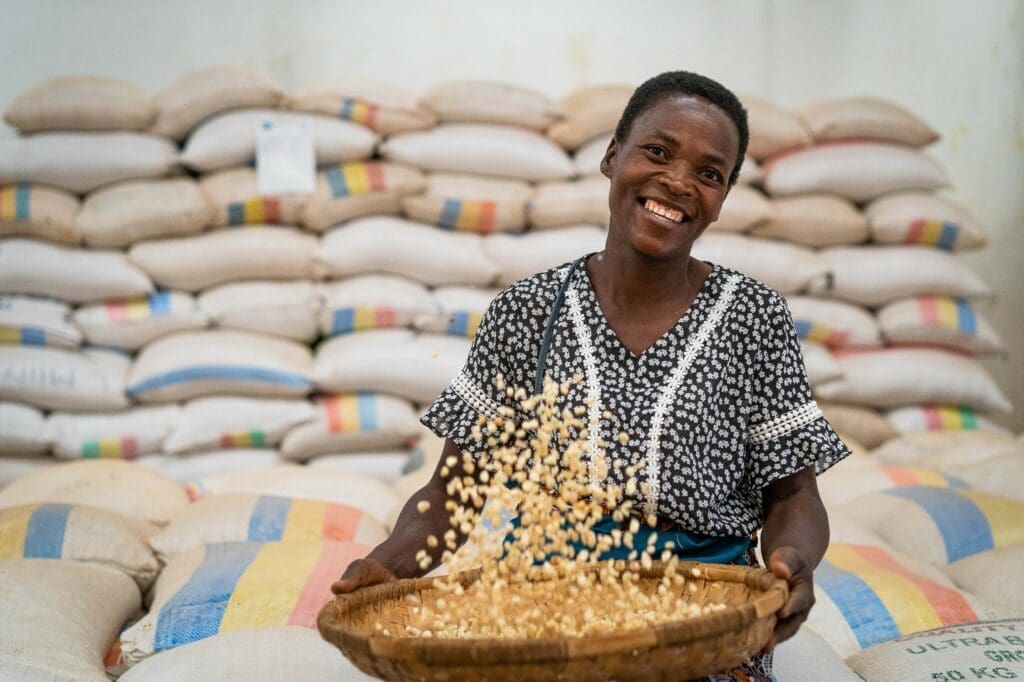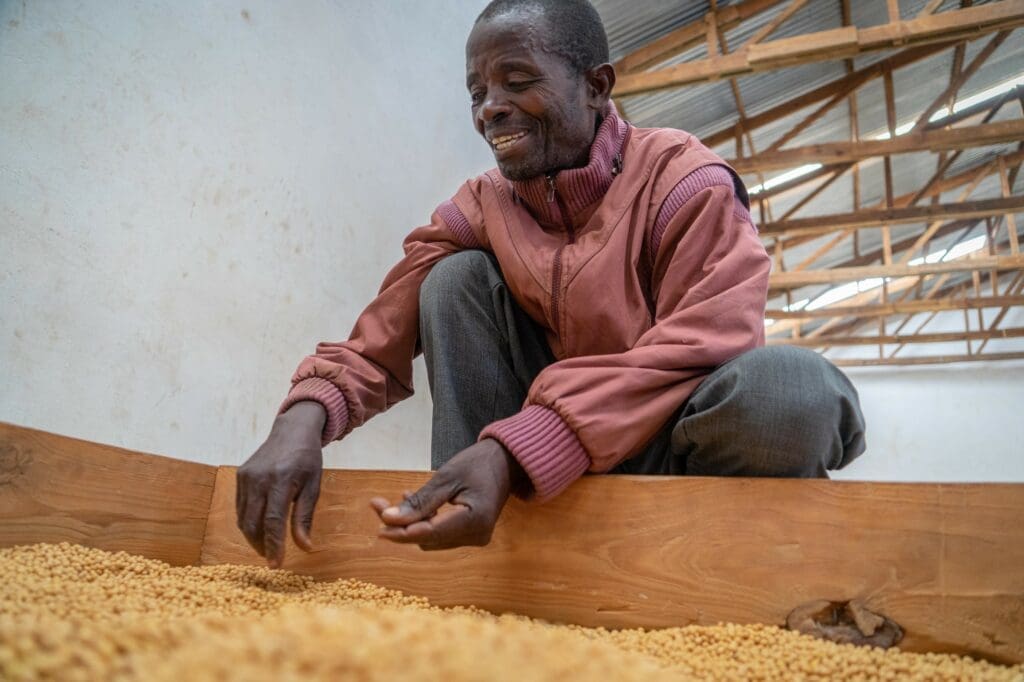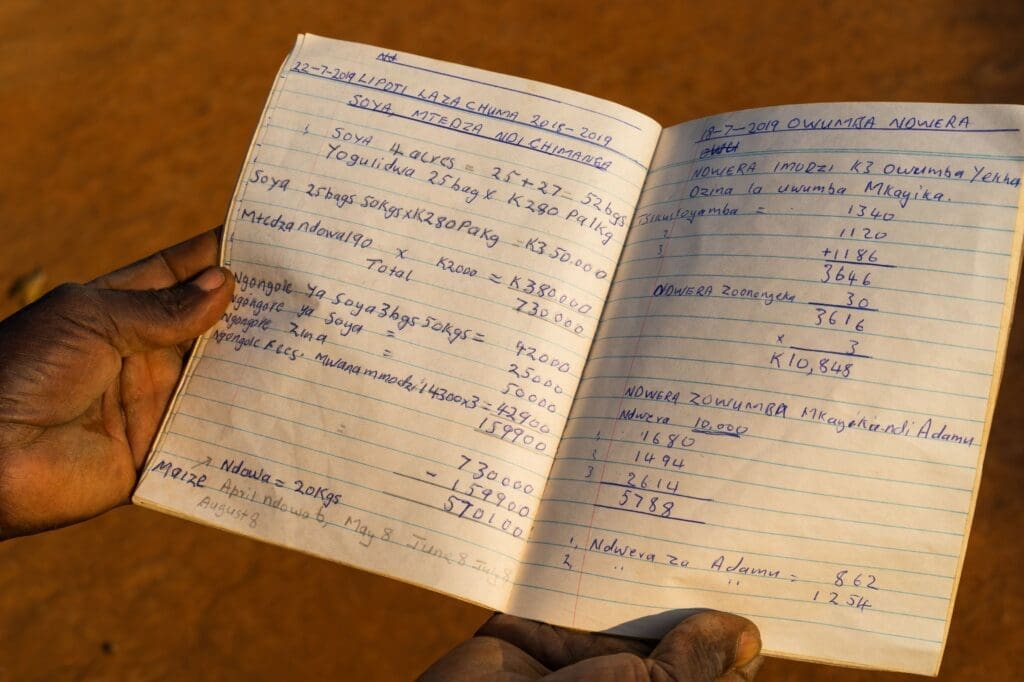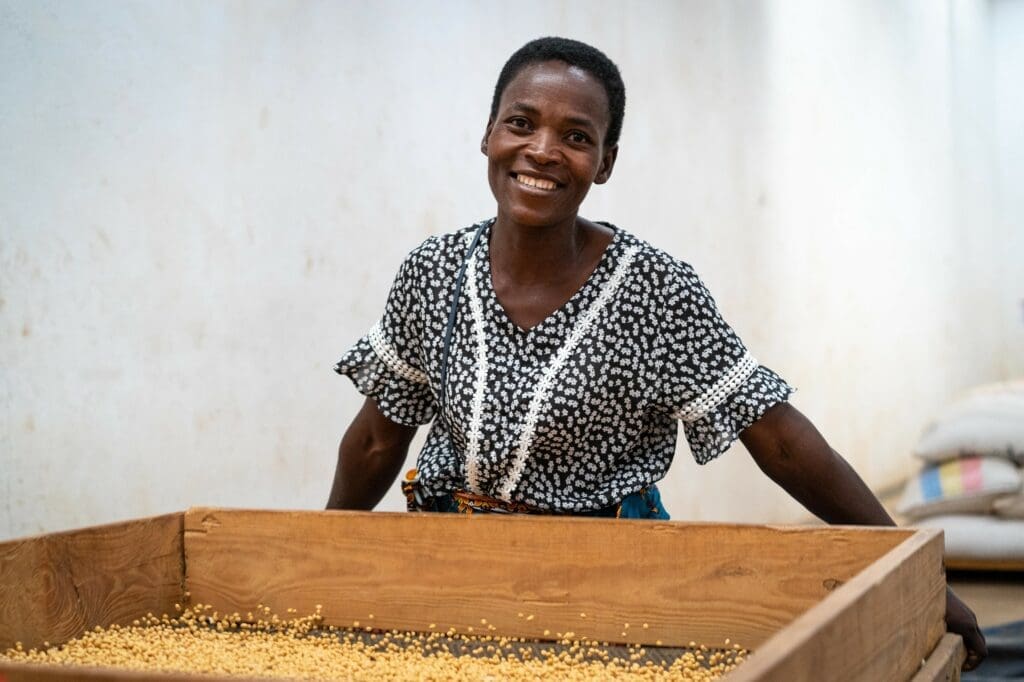
Stop Wasting Food. Start Feeding Children.
One of the biggest challenges small-scale, poor family farmers face is a lack of technical knowledge and resources for processing and storing their harvested crops. In Malawi, on average, around 30 percent of their hard-earned harvests is regularly lost to rodents, bugs and mold within a few months after picking.
This is the developing world’s version of food waste. It’s called food loss, and it has devastating consequences for children.
Around the world today, more than 3 million children die from hunger-related causes every year. Imagine how many children would be saved if we could simply help their farming parents preserve the food they grow. For members of the Gwiritse Cooperative in Malawi, that vision has become reality.
Timothy & Alice
Timothy Katumbu and his wife Alice used to keep their produce in a locally-made granary and would always lose a large portion of it to rodents. They also struggled to find buyers for their produce, because the quality was damaged by poor storage conditions. Following the construction of a modern warehouse in their neighborhood, Timothy and Alice now have a safe place to store their crops.

Timothy cleans his soy beans at the Gwiritse warehouse.
“Before joining the cooperative, I was losing at least 10 percent of my produce because I was using ineffective methods,” says Timothy. “Through the cooperative, I have learned improved technologies and practices that have helped reduce the grain loss, and now I make more profits.”

Record keeping helps Timothy make well-informed decisions and understand farming as a business.
The money allows them to buy more than enough food for their family and reinvest the extra cash: “I’ve also learned to keep records, which help me better understand how much profit I make, record my expenses and plan better for the next season. Now I farm for business, not just to feed my family.”
Rufina Deodatu
Rufina Deodatu, 44, has four children. She joined the Gwiritse Cooperative and started storing her produce in the warehouse in 2017. Through the cooperative, she now has access to loans and receives up-to-date market information which helps her fetch better prices.

Rufina sifts her corn at the Gwiritse Cooperative warehouse.
“Previously I was selling my produce to vendors who always dictated the prices. Being an individual seller, I had no power to negotiate. Since I joined the cooperative, I’ve seen the power of numbers: We can negotiate better prices with traders — if one declines, we move to the next till we get the right prices for our produce,” she says.
“Before, I would struggle to even buy soap, sugar, cooking oil and other food needs. Now I can afford these, and I can comfortably pay school fees for my four children.”
“I’ve used part of the money from previous years to buy livestock. I sell the livestock to buy fertilizers. I also use dung from the livestock in my gardens,” she says with a big smile.

Being part of a cooperative helps Rufina fetch better prices for her produce and cover comfortably her family’s necessities.
In 2020, the United Nations World Food Programme (WFP) and partner organizations trained 108,000 farmer organization leaders and individual farmers on post-harvest, warehouse management and best agricultural practices.
As a result, farmers like Rufina have managed to grow out of poverty and hunger and are now equipped to feed their children nutritious meals throughout the lean seasons.
The U.N. World Food Programme relies on public donations to feed millions of children every day. See how and get involved.
A previous version of this story was written by Francis Thawani and originally appeared on WFP’s Insight in September 2019.




